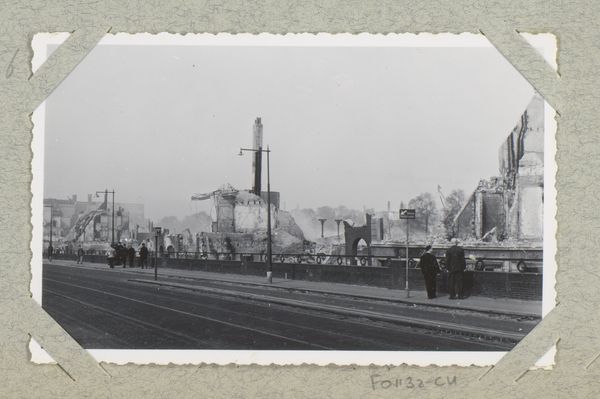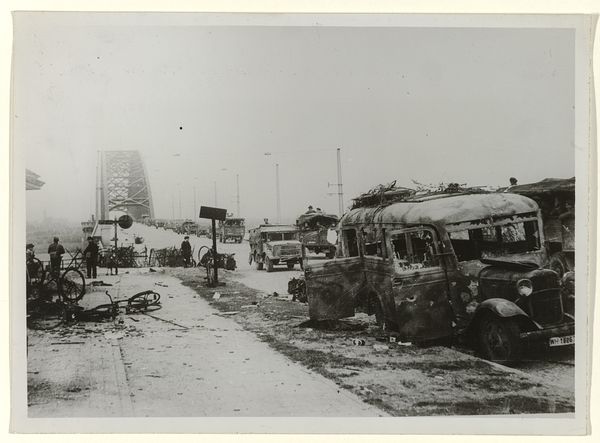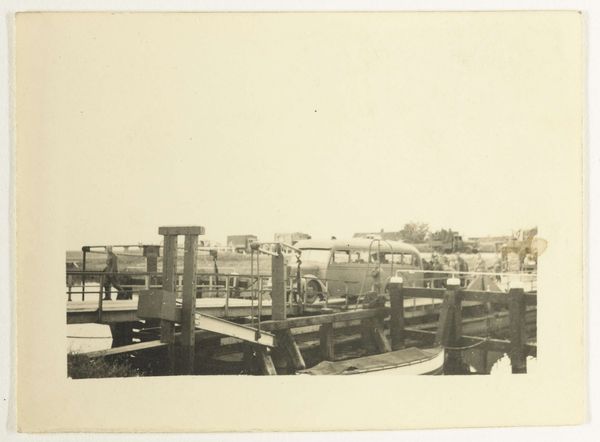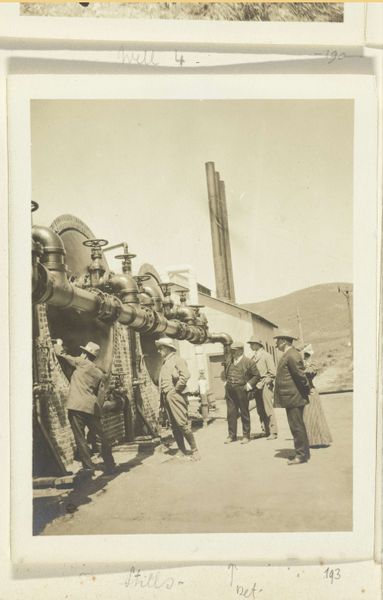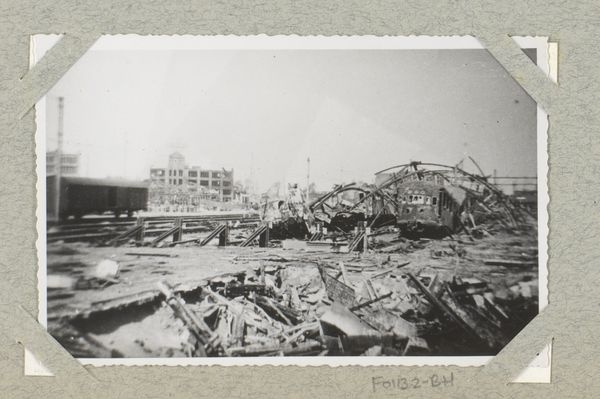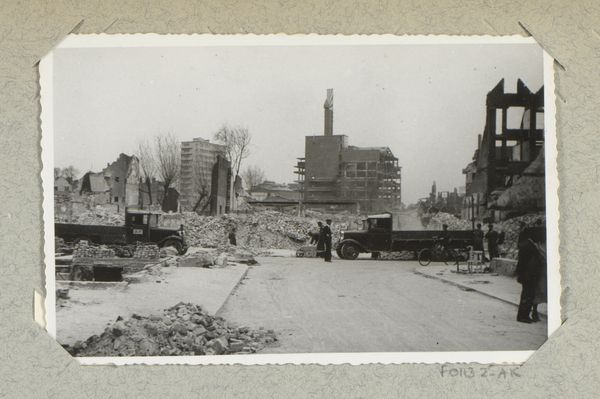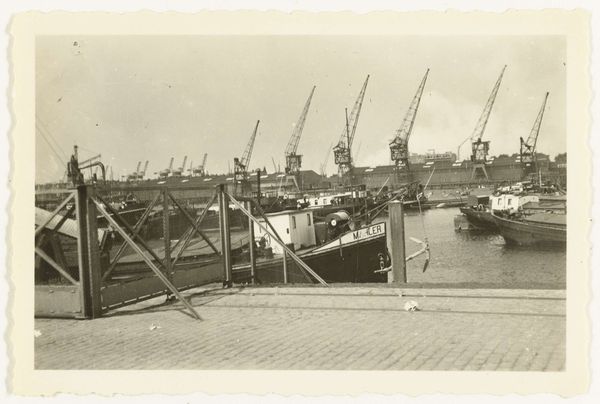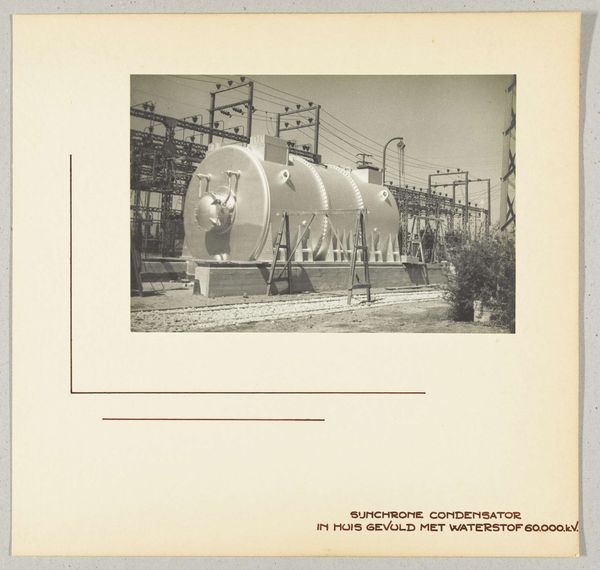
photography, gelatin-silver-print
#
landscape
#
photography
#
gelatin-silver-print
#
cityscape
#
modernism
#
realism
Dimensions: height 88 mm, width 136 mm
Copyright: Rijks Museum: Open Domain
Curator: This is a photograph entitled "Ruïnes te Rotterdam" by J. Nolte, likely taken between 1940 and 1945. It’s a gelatin-silver print. Editor: The devastation is palpable, isn't it? Even through the starkness of the black and white, you feel the weight of what's been lost. The city seems almost skeletal. Curator: Yes, Nolte captures that atmosphere masterfully. Notice the composition; the destroyed buildings loom in the background, contrasting with the relatively intact street in the foreground. It creates a visual hierarchy. Editor: It also emphasizes the human element, doesn’t it? Seeing those few figures walking amidst the debris makes you think about the labor required to rebuild, the physical work of clearing the wreckage, and also the work to get back to normalcy. Curator: Precisely. The geometry of destruction plays against the implied lines of the city's planned structure. Note the textures, the way the light catches the broken brick. Editor: Those materials though—bricks, steel—transformed into rubble. I think of the factories, the workers who forged those elements, and now their labor has resulted in a city in ruin. It's quite jarring to consider. Curator: Indeed. The stark contrast reinforces the abrupt end to production and life during that time. You could read it as a potent symbol of broken Modernist ideals too. Editor: And yet, those individuals walking through the landscape of broken production become active participants, redefining it in a materialist way by their resilience to live beyond those ruins. It gives one hope. Curator: A thought-provoking intersection of aesthetics and social reality. Thank you for this consideration of Nolte's image. Editor: My pleasure, finding those small human efforts in it leaves a bigger impression in the end.
Comments
No comments
Be the first to comment and join the conversation on the ultimate creative platform.
